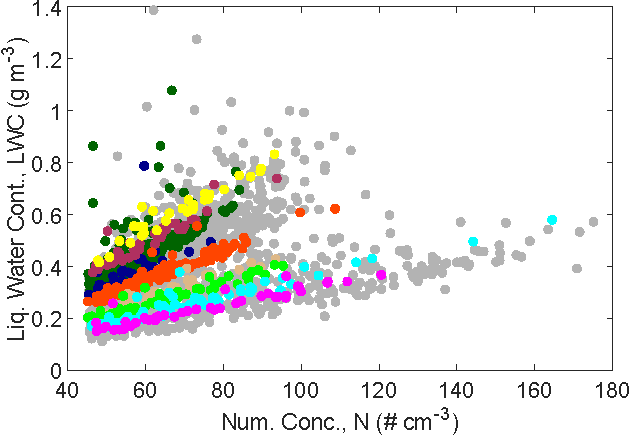Locally narrow droplet size distributions are ubiquitous in stratocumulus clouds
Submitter:
Shaw, Raymond A — Michigan Technological University
Area of research:
Cloud Processes
Journal Reference:
Science
Cloud process rates such as drizzle formation depend on the assumed cloud droplet size distribution shape. These droplet size distributions are based on spatially averaged measurements of cloud droplet number concentration and diameter and are often represented in models as broad gamma distributions.
Impact
Regions of stratocumulus cloud contain cloud droplets with similar sizes, that when averaged together result in a broad droplet size distribution. Local droplet concentrations are diluted to varying degrees, but the distribution shapes tend to persist within these regions. Cloud process rates such as the formation of drizzle are influenced by this nonuniform distribution of droplet size distribution shapes.
Summary
The Holographic Detector for Clouds (HOLODEC) captured 10-cubic-cm-sized samples of droplets in stratocumulus clouds during the ACE-ENA field project based at the ARM Eastern North Atlantic Observatory in the Azores archipelago. The droplet size distributions at these "local" scales are narrow, and only when averaged over 10s of km do the usual broad gamma distributions appear. Like-shaped distributions tend to reside together, and are diluted to varying extents. This suggests that the limit of inhomogeneous mixing is a good approximation in these clouds. The organization in regions, with inhomogeneous mixing acting within those regions, provides a simplified basis for representing variability in cloud droplet size distributions. Cloud process rates depend on this variability, for example, a globally averaged mass autoconversion rate is not equal to the mean of local autoconversion rates. Thus, the variability in droplet size distribution shape, as well as number concentration and liquid water content, should be considered.



